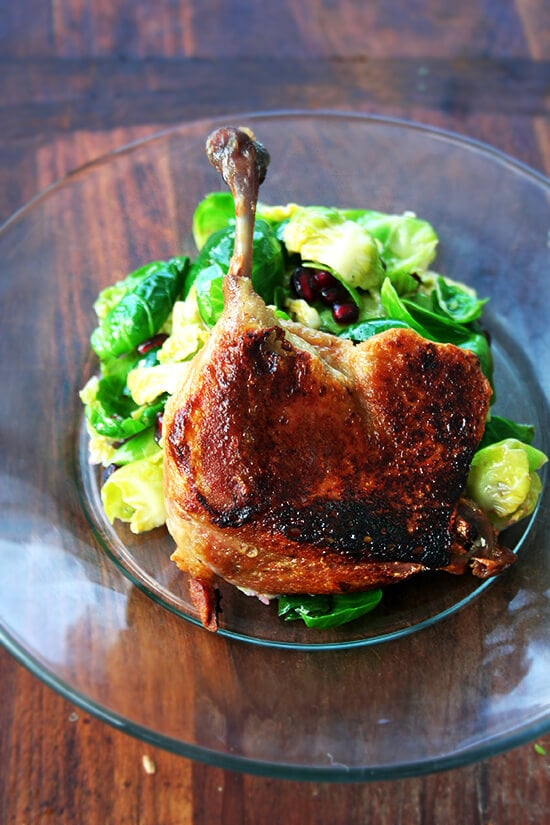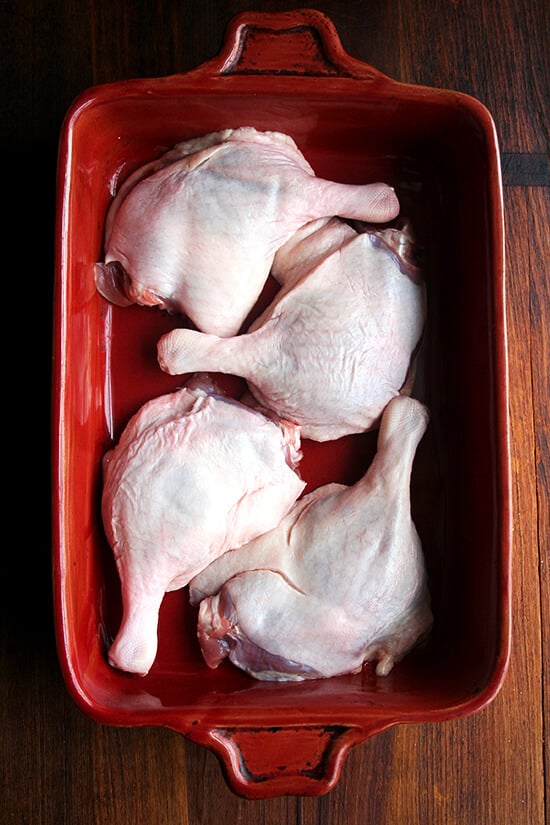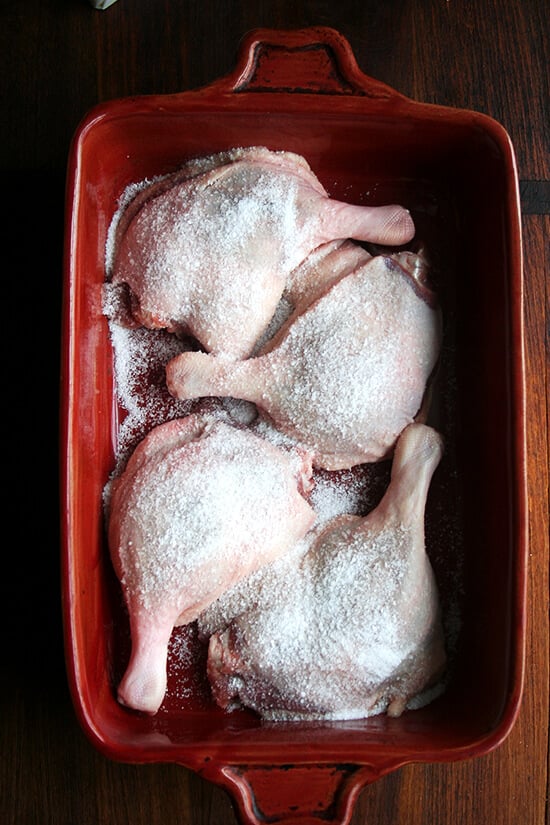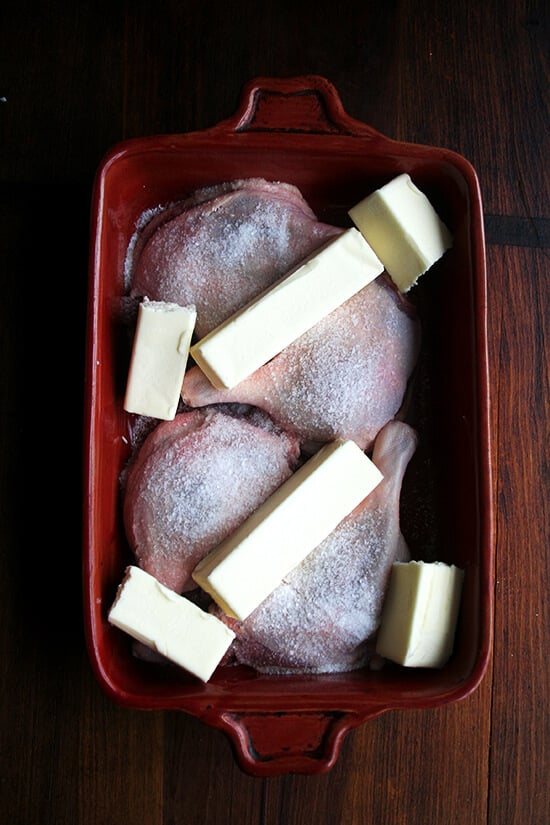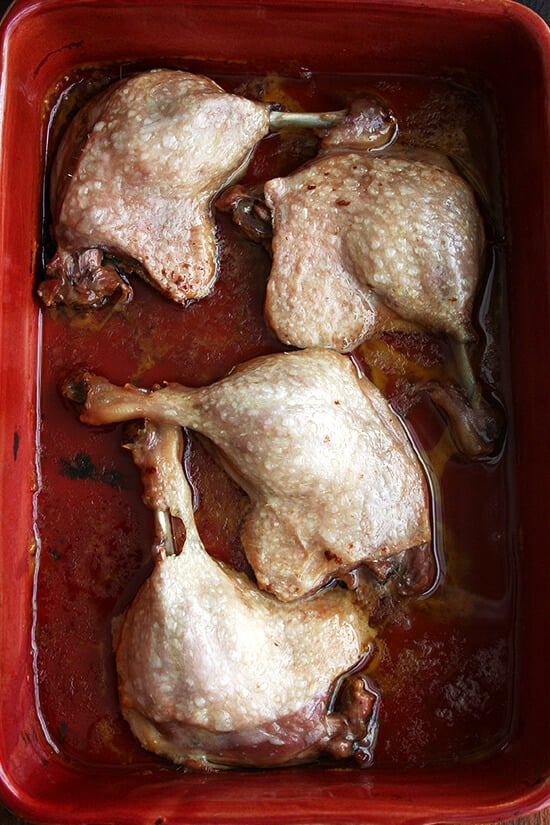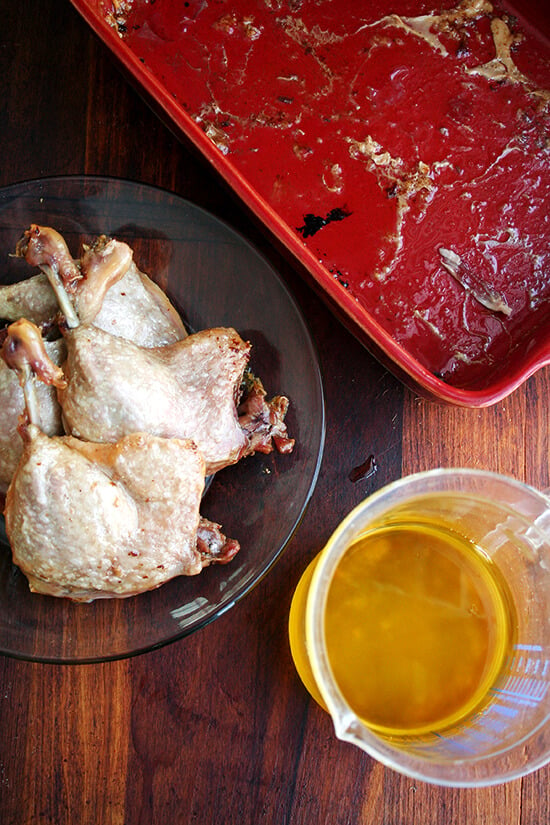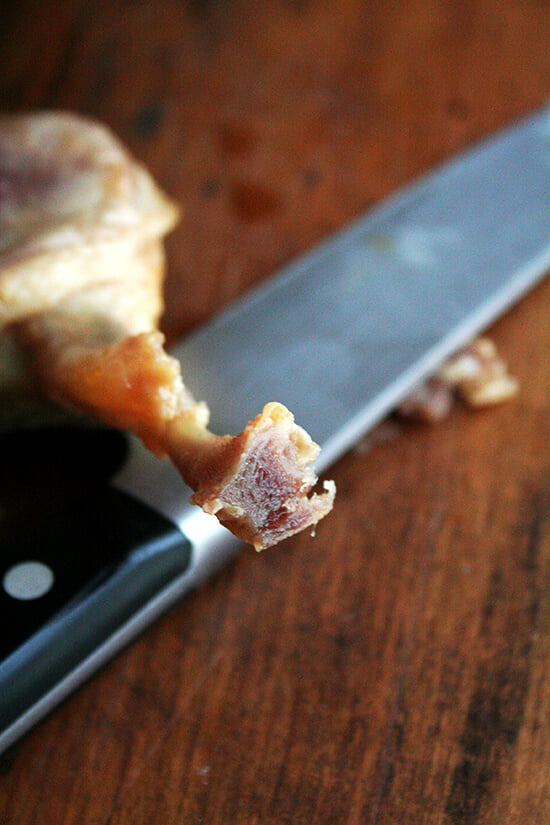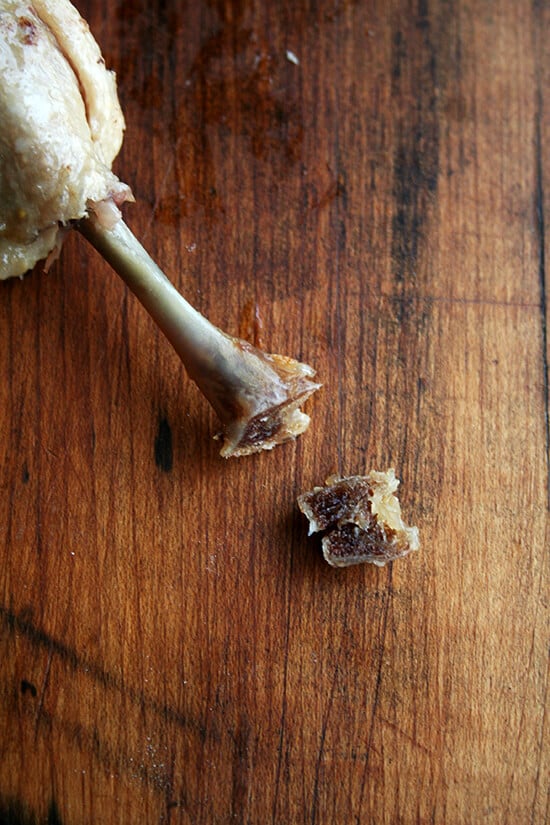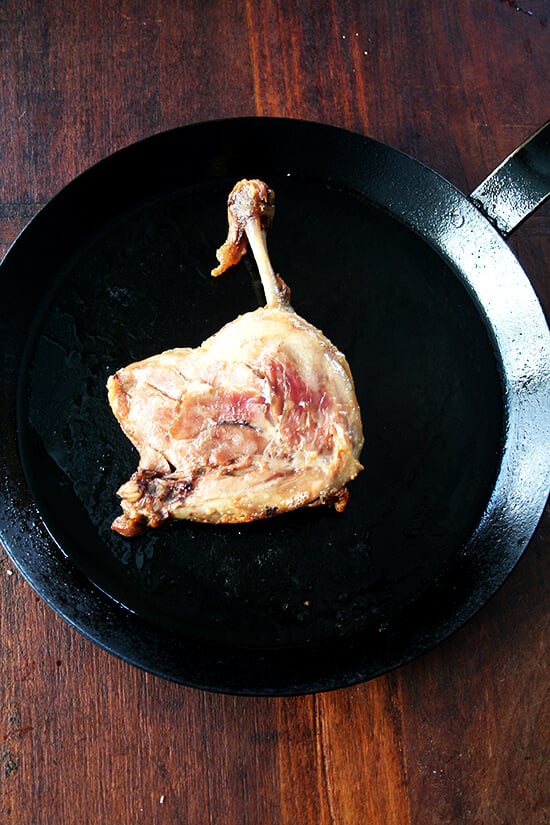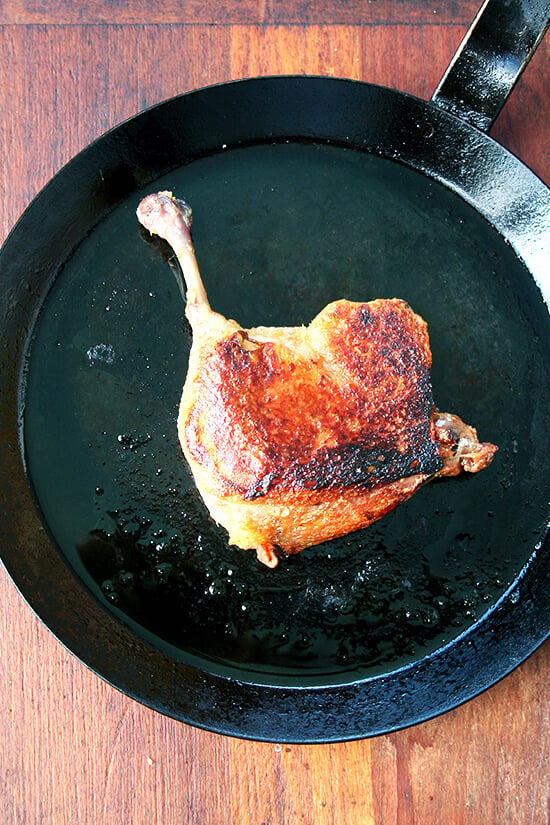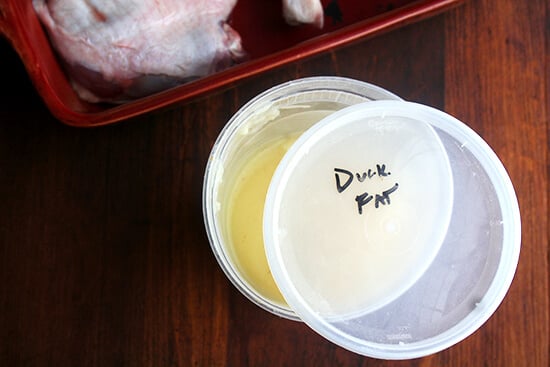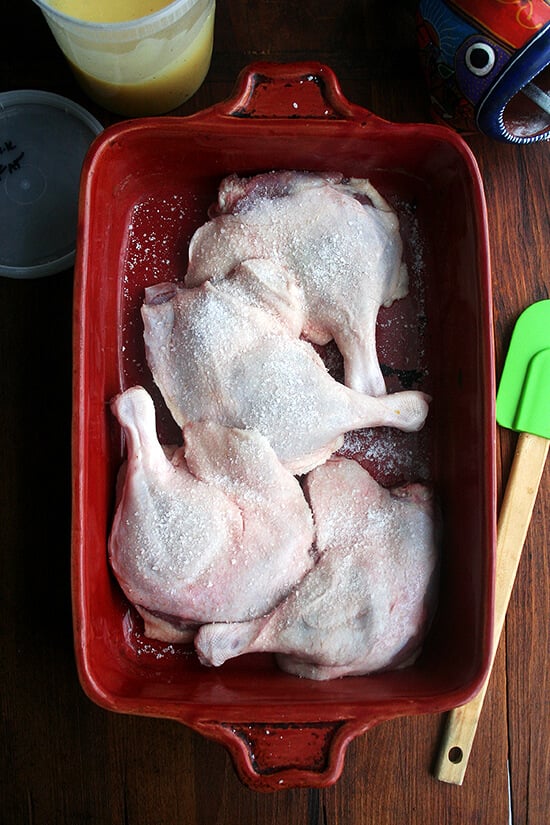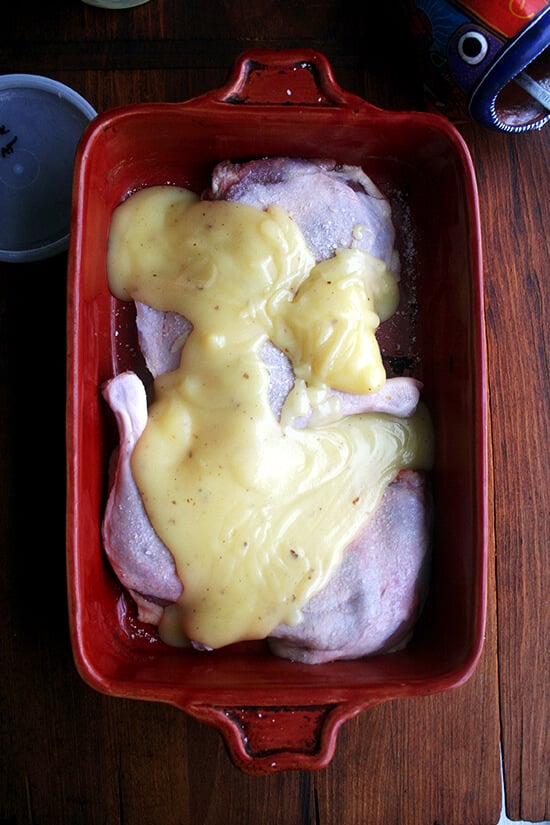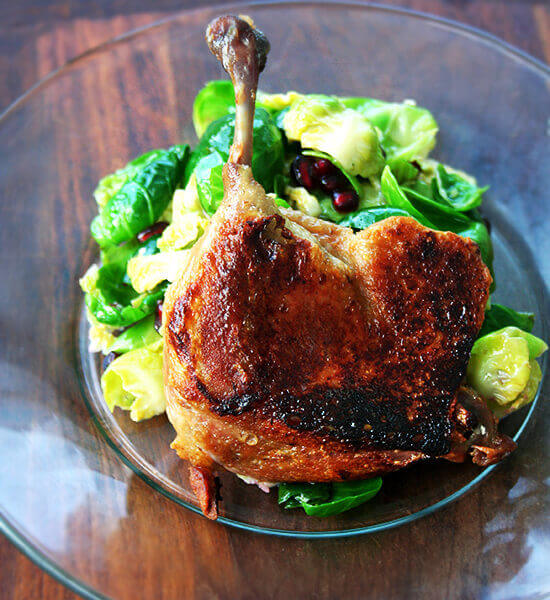What is Duck Confit?
Confit is an ancient method of preserving, born out of necessity: by salting meat, cooking it, and storing it in fat, it could keep without refrigeration for months on end. Today, the method is no longer used (typically) to preserve meat, though it still yields incredibly tasty meat. For duck leg confit, duck legs first cook slowly in salt and fat till the meat is nearly falling off the bone. Before serving, the legs are crisped in a pan till golden all over.
3-Ingredient, 3-Hour Duck Leg Confit: The Story
On January 23rd, 2006, two cases of duck legs arrived at Fork, the restaurant where I was working, and per the day’s to-do list, I threw them into hotel pans, covered them with a layer of kosher salt, then headed to the walk-in to find the duck fat. This was how we made duck confit at Fork: 1 case of duck legs per hotel pan, liberal coating of kosher salt, duck fat submergence, tight covering of aluminum foil, two and a half hours in the oven. But when I got to the walk-in, I couldn’t find the duck fat. I looked and looked. I had made the mistake more than once of declaring we were out of something when we weren’t, and so I looked some more. Shit, I thought. But before running to the chef, Thien Ngo, I looked and looked again. It had to be there. I was positive this was the greatest conspiracy of the inanimate I had ever faced. There was no way two 8-quart tubs of duck fat had walked out of that walk-in. But after awhile, I had to tell Thien. He looked too. He couldn’t find it. We suspected it had been tossed. There had been a lot of turnover in the kitchen staff in recent weeks, and it was likely someone had innocently trashed the duck fat, a supply Thien had been building for eight years, a supply that grew more flavorful with every use, the key ingredient to one of the restaurant’s staple dishes. After Thien berated me for allowing this to happen, noting that this — me! — was why he could never take a vacation — oh, the drama! — let alone a day off, he set to work rectifying the situation. Into each hotel pan he tossed pounds and pounds and pounds of butter along with a few sprigs of thyme and lots of salt. Then he cooked the legs just the same: tightly covered with foil for two-and-a-half hours. And when those legs emerged from the oven, we stored them just the same: legs in one tub; fat, clearly labeled, in another. That evening, the line cooks crisped up those duck legs as always, standing them up dramatically against mounds of frisée tossed with crispy lardons and pan-seared Brussels sprouts. Nobody suspected a thing. Losing 16 quarts of duck fat turned out to be not such a big deal, but if the specificity of the date is any indication, I’ve never quite recovered from the experience. Have you ever wanted to make duck confit at home? Have you been deterred by the two-day process as well as by this ingredient: 3-quarts of duck fat? Have you searched to no avail for duck fat at your grocery store? Have you looked online only to discover that such a purchase might set you back 50 bucks or so before shipping? Well, if so, I have some good news: you can make pretty damn good duck confit in about three hours with only three ingredients: duck legs, salt, and butter. It may not be traditional, but it might be the fastest, most-delicious bistro-style meal you ever prepare. What’s more, after you make it once, you’ll start building your own supply of duck fat, which, so long as you run a tight ship, you might just have on hand forever. PS: Perfect Pan-Seared Duck Breasts with Port Wine Sauce PPS: Looking to complete your French-bistro dinner at home? Try this: Chocolate Pots de Crème
How to Make Duck Confit: A Step-by-Step Guide
Making duck confit is a two-part process: first the legs braise slowly in fat; then the legs are seared stovetop to crisp up the skin. Step 1: Nestle 4 legs snugly into a baking dish: Step 2: Sprinkle with 1 tablespoon kosher salt: Step 3: Cover with a pound (2 cups) of butter. Before you are deterred by the quantity of butter, take a look at the third photo below with the retrieved fat. Step 4: Transfer to the oven in a tightly covered pan for 2.5 hours: Step 5: Remove duck legs from pan and set on a plate. Transfer fat to a storage vessel. This is the amount of fat retrieved from the baking pan: 1.75 cups. So essentially, only about 1/4 cup of fat — that’s 1 tablespoon per leg — goes into the cooking of these legs. And when you are ready to crisp up the legs, if you feel like being fancy, use the heel of your knife to whack off the end of the bone… and trim away any fat extending up the bone: To prepare the duck legs for serving, place skin side down in a hot pan: Store the duck fat: The next time you make confit, use your newly created supply of duck fat: 5 from 2 reviews Traditionally, too, confit is stored in fat, which will preserve it for months. You certainly could do that, but if you plan on crisping up the legs within a few days, it’s easier to store the legs and fat separately. Serve the confit with a simple green salad tossed in a shallot vinaigrette. Do not be deterred by the amount of fat here (or in any confit recipe). Very little fat ends up in the meat, and the duck confit itself does not taste fatty.
